
On January 31 1953, a huge storm pushed a great tide into the east coast, which breached Essex sea walls in 300 places and spelt disaster for residents along the north and south Essex coast. It was the worst natural disaster to affect Britain in the 20th century.
For this year’s Essex Book Festival we will be looking back and drawing inspiration from Hilda Grieve’s record of The Great Flood of 1953.
Our Hear My Voice project is an interactive intergenerational community project designed to encourage our older + younger audiences to come together to mark 70th anniversary of The Great Flood via podcasting, storytelling and writing workshops. More details coming soon.
One of our key ambitions for this year’s festival is to help raise awareness of projected rising waters and flooding in Essex. According to Essex Climate Action Commission’s Net Zero: Making Essex Carbon Neutral Report, Essex is at increased risk of flooding compared to other counties: unless significant action is taken within the next 10 years, the number of homes at risk of flooding could double by 2050.
Below are some videos, blogs, books, audio and articles created as part of commemorations to mark 70 years since the 1953 flood.
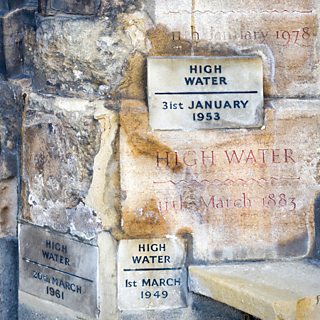
Learning From the Great Tide
In this Whistledown production for BBC Radio 4, released 30 January 2023, Justin Rowlatt asks what lessons can still be learned from the North Sea flood of 1953.
On the night of 31st January 1953, the combination of a high spring tide and a storm over the North Sea caused a devastating surge of water to sweep across the East Coast and up the Thames Estuary.
It was one of Britain’s worst natural disasters in the 20th century – 307 people lost their lives in England and over 1,800 in the Netherlands – and yet it has largely been forgotten in the UK.
It also inspired one of the great works of English social history, The Great Tide by Hilda Grieve, which tells the story of the flood in Essex, and the extraordinary response of its local communities and emergency services.
To commemorate the 70th anniversary of the flood, BBC Climate Editor Justin Rowlatt asks what lessons were learned. We’re better protected now as a result of the disaster but, as our coastal defences begin to age and sea levels continue to rise due to climate change, are we prepared for the next tide?
Listen on BBC Sounds
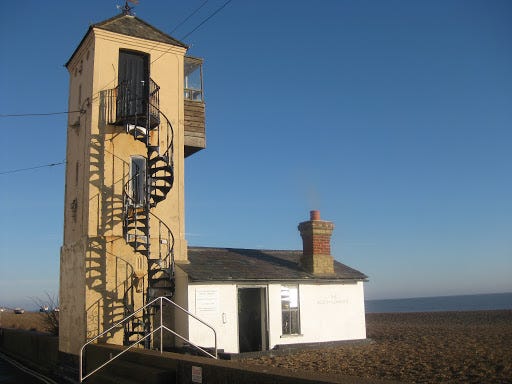
70 years: Have we learned from the Great Flood?
By Bridget McKenzie, Director of Flow & Climate Museum UK; Co-founder of Culture Declares; Cultural consultant & researcher, artist-curator, educator.
In the last days of January 1953, 70 years ago, my great grandfather Herbert Abbs, spent hours with his binoculars raised in his lookout tower at Aldeburgh. All week he studied the fractious weather and sea. As it typically is, the North Sea was gunmetal grey. But he felt something was odd about the heavy prison-blanket of a sky, about the wind and the waves.
Read more at medium.com/extreme-weather-stories
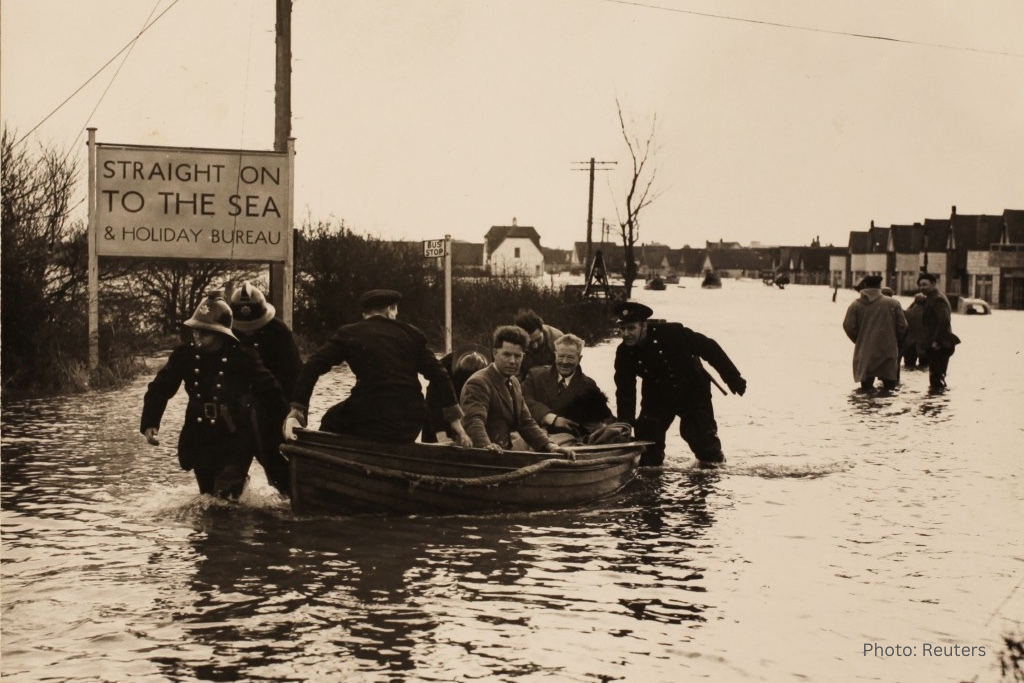
The 1953 Floods in Essex
Essex Record Office Blog
On the night of Saturday 31 January 1953 a severe storm coincided with a high spring tide in the North Sea, and the resulting tidal surge caused great devastation all along the east coast. In eastern England 307 people were killed, 120 of them from Essex.
The worst hit communities in the county were Canvey Island, where 58 died, and Jaywick, where 37 people were killed (5% of the population). A major operation was mounted to rescue as many people from the flooded areas as possible. Along the east coast of the UK, 30,000 people were evacuated from their homes.
Read more and view some of the many documents in the ERO which tell some of the stories of the floods in Essex at essexrecordofficeblog.co.uk
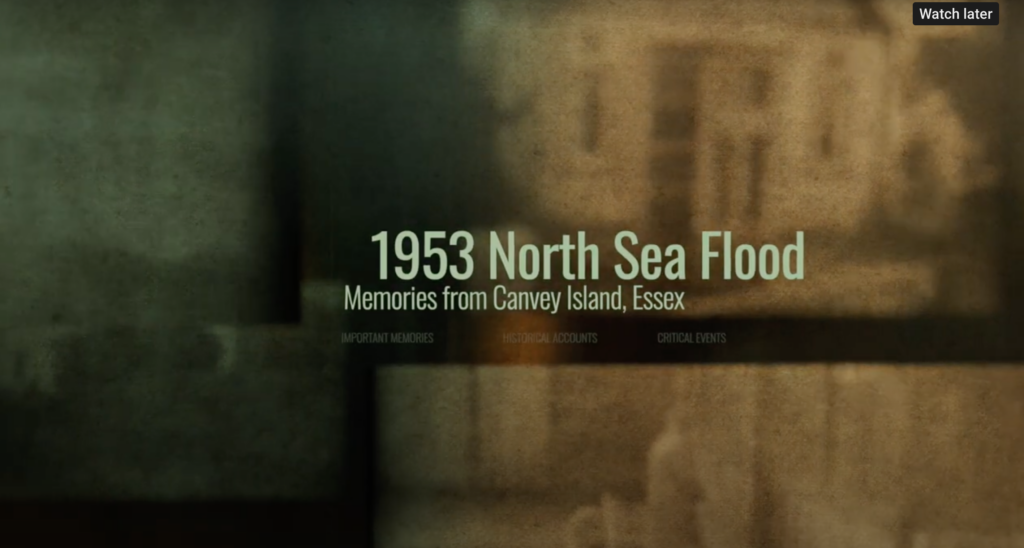
The 1953 North Sea Floods: Memories from Canvey Island, Essex
Essex Climate Action Commission video
This year marks the 70th anniversary of one of the worst floods in England and Scotland during the 20th Century. It was one of Britain’s most significant peacetime tragedies, with Winston Churchill calling it a “shocking and tragic disaster”. Essex was heavily affected, with many lives lost and thousands of homes destroyed.
A major rescue operation was mounted to evacuate as many people from the flooded areas as possible, with around 10,000 people evacuated from Canvey Island alone.
Canvey was one of the communities in Essex that suffered the most significant loss of life, with 58 deaths. In Jaywick, 35 people died, and there were 120 total deaths recorded in Essex.
In this video, Ray Howard MBE and Malcolm MacGregor recall living through the floods in Canvey Island.
Watch The 1953 North Sea Floods: Memories from Canvey Island video on YouTube
To find out how Essex County Council is responding to the Essex Climate Action Commission’s Net Zero: Making Essex Carbon Neutral report, read the Essex Climate Action Plan.
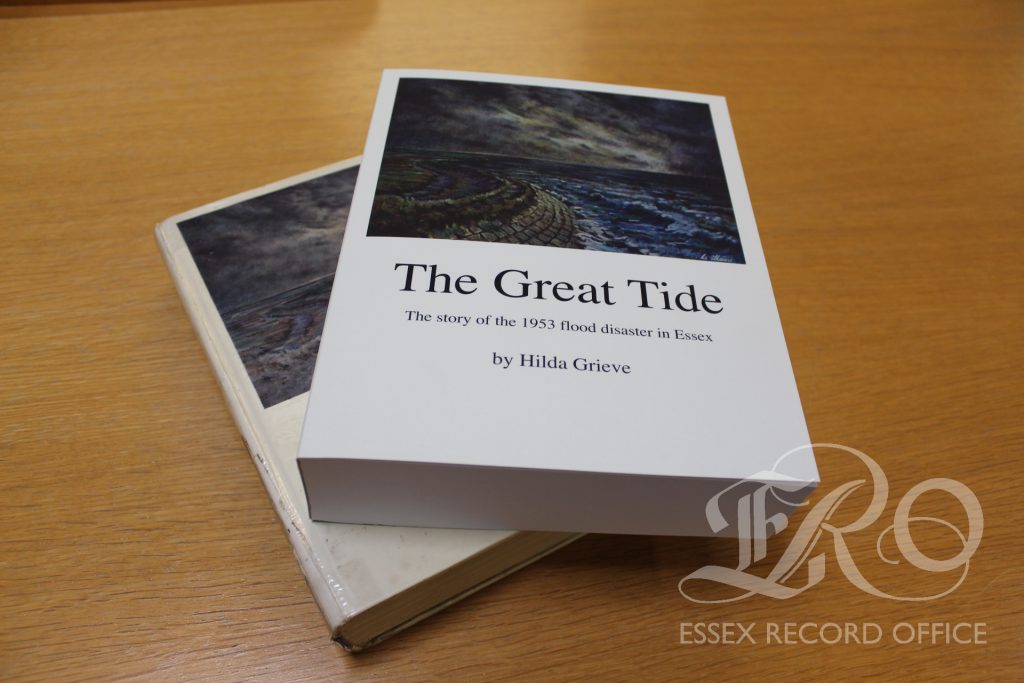
‘The Great Tide’ remembered
“The Great Tide” was written and researched by Hilda Grieve, then Senior Assistant Archivist at the Essex Record Office. It was commissioned by Essex County Council shortly after the flood, with the intention of documenting the “complete story” of the disaster. Essentially this would be Essex County Council’s official report into the floods, but in the writing, it became so much more.
Published in 1959, “The Great Tide” told the story of the county’s relationship to the sea, the meteorological conditions preceding the flood, the events of 31 January and 1 February, and the subsequent rescue, relief, and restoration efforts in meticulous detail, drawn from six years of careful, patient research. It has since been described by the writer Ken Worpole as “one of the great works of twentieth century English social history”.
Copies of “The Great Tide” will be available to purchase for £20.00 in person (£25.00 posted) from the Essex Record Office from the 6th February. You can contact them at ero.searchroom@essex.gov.uk for details of how to order your copy.
VLOED by Lucia Dove

‘There is land that was once sea and there is sea that was once land and there are the places that are in waiting.’
VLOED / flood / flood-tide / flow
VLOED is a work of creative nonfiction. Comprising historical analysis, poetry and photography, the book explores the shared cultural memory and landscape between Essex and the Netherlands in relation to the North Sea Flood of 1953. The disaster, which left deep impressions at both local and national levels across the two places, is perceived here through the lenses of heritage, homesickness and decay.
Lucia Dove is a writer from Southend-on-Sea, Essex, living in the Netherlands.
The Tides of Tendring
Claire Pearson
Memories of the 1953 Flood around the Tendring Peninsula.
Listen to stories of people who lived through the events of 31 January/1 February 1953 in the villages of Jaywick Sands, Point Clear and St Osyth in the county of Essex, UK.
Special thanks to the Friends of Jaywick Martello Tower & Essex Sound & Video Archive at Essex Records Office.

